Hydraulic & Pneumatic Lab Products
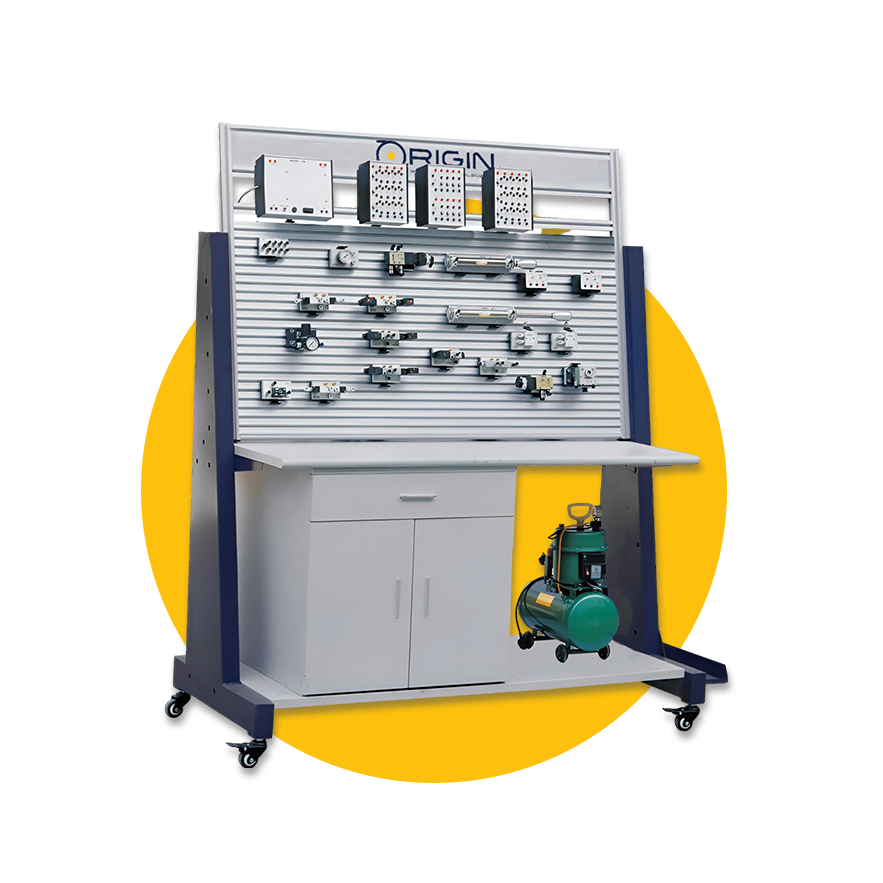
Basic Pneumatic unit training unit
Code : (MTH-11)
The Basic Pneumatic kit is an educational unit for benchtop use that shows different pneumatic systems, applications, and common components like actuators and valves.
Moreover, the kit allows for the creation and management of basic pneumatic systems.
• Using a single-acting cylinder in operation.
• Control a single-acting cylinder using a throttle valve.
• Functioning of dual-acting cylinder.
• Functioning of a dual action cylinder with throttle valve and check valve
• Circuit for a limit switch.
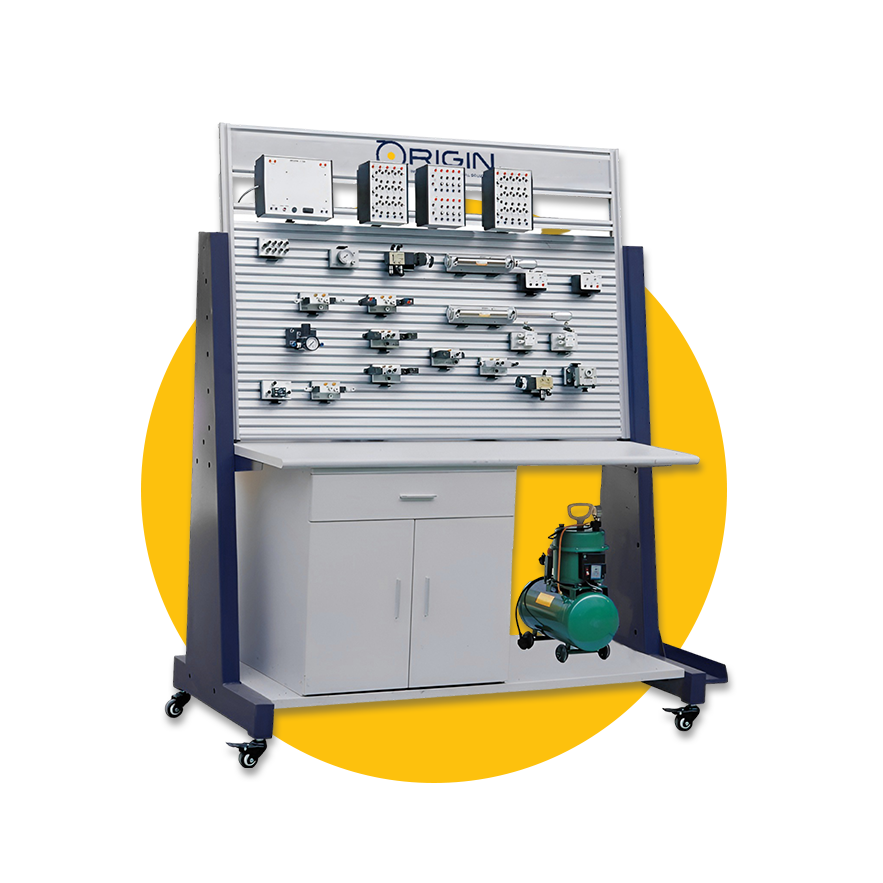
Advanced Pneumatic training unit
Code : (MTH-12)
The pneumatic training system aims to offer hands-on practical training.
A variety of pneumatic is utilized in typical industrial settings.
The training system contains numerous elements to improve students' abilities on.
Building circuits and reviewing the associated plans and diagrams.
• Fundamental laws governing pneumatic control systems.
• Manufacturing and dispersal of compressed air
• Configuration and features of pneumatic actuators.
• Determine fundamental measurements.
• Purpose and application of pneumatic control valves
• Identifying and sketching pneumatic symbols.
• Creating diagrams for pneumatic circuits in compliance with the established standards.
• Control and monitoring of pressure
• Employing rapid exhaust valves
• Control systems using compressed air logic
• controls for sequencing using air pressure
• Controls that vary with pressure using pressure sequence valves.
• Controls that are dependent on the position with valves that have limit switches.
• Controls that are dependent on time and include valves with delays based on time.
• Regulations for the safety of the pneumatic system.
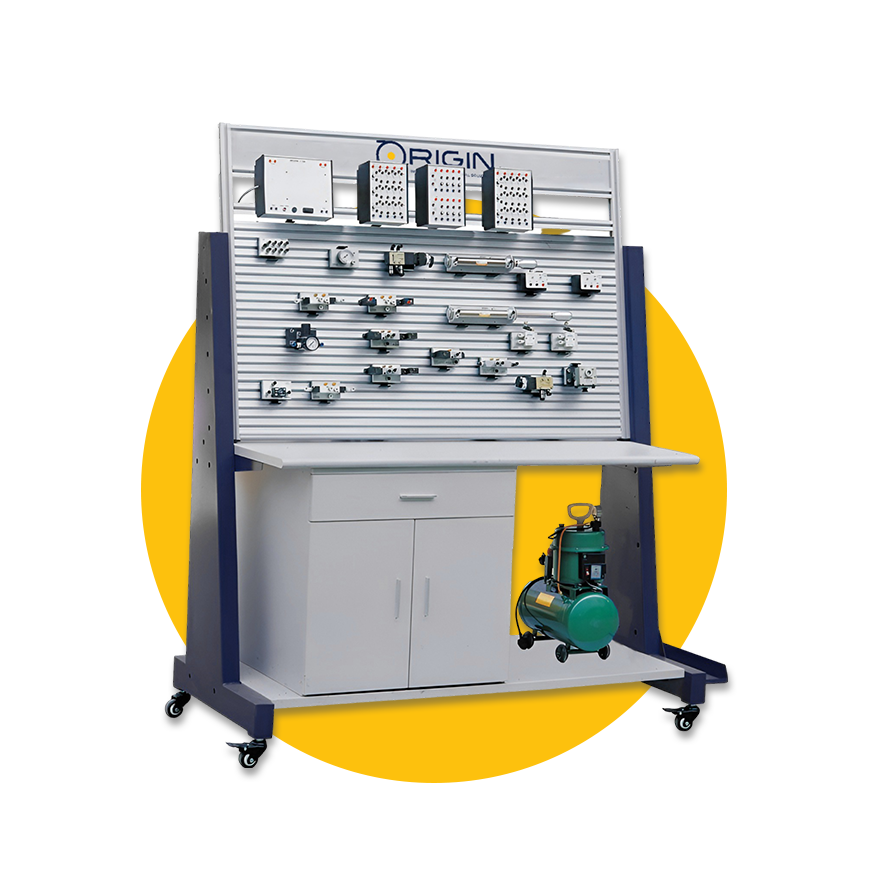
Electro-pneumatic training unit
Code : (MTH-13)
The training kit has variety of electro pneumatic circuits which are utilized in typical industrial settings.
Utilizing this training system allows students will learn to combine various components in the circuit and also to conduct the wiring of different electrical parts for the circuit to function.
• Fundamental laws of electrical systems and pneumatics
• Purpose and application of electro-pneumatic parts
• Identifying and sketching electro pneumatic symbols.
• Representation of movements and functioning status
• Creating schematic diagrams of pneumatic and electrical circuits.
• Direct and indirect manual commands
• Controls that vary depending on the position, both direct and indirect.
• Depiction of movement sequences and transition between different states
• Creating control systems utilizing relays.
• Circuits that latch electrically
• Use and purpose of 3/2 and 5/2-way solenoid valves
• Purpose and use of limit switches
• Monitoring the end position with the use of electronic proximity sensors
• Controls that depend on time using timer relays.
• Identifying issues in basic electro-pneumatic systems
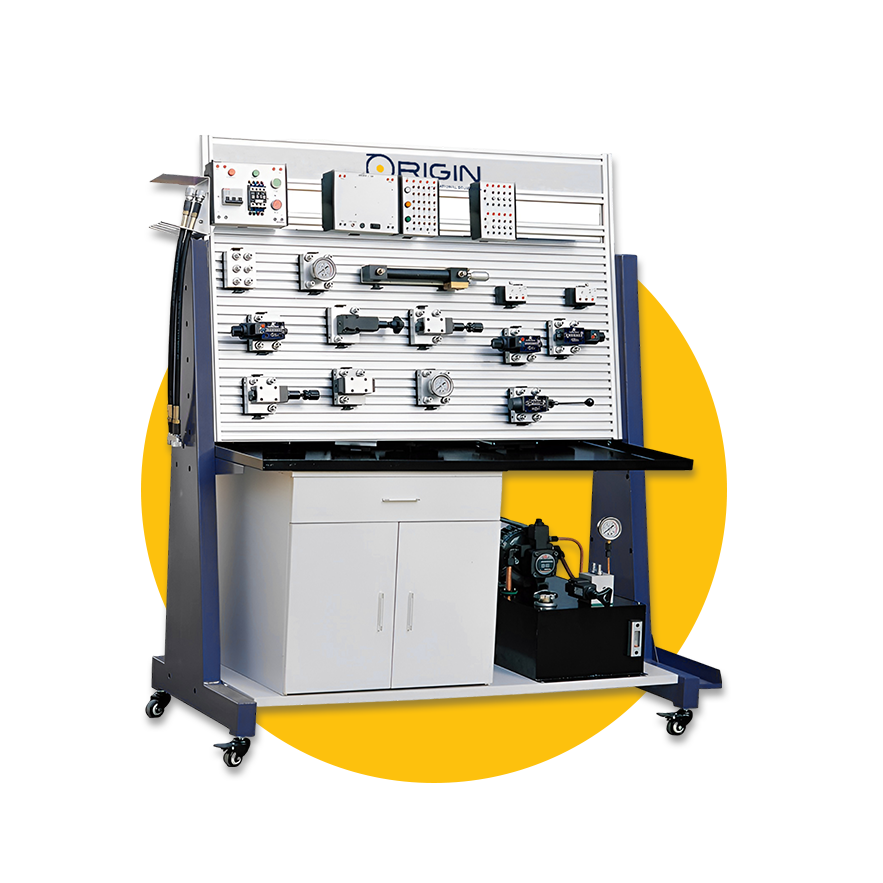
Basic Hydraulic training unit
Code : (MTH-14)
The basic hydraulics kit is a tabletop kit created to familiarize students with common hydraulic components like pressure regulators, pressure gauge, flow control valve, and single and double acting cylinders.
The device also permits the creation and management of various hydraulic systems.
• Functioning of a single-acting cylinder.
• Functionality of single acting cylinder utilizing throttle valve.
• Functioning of single acting cylinder using throttle and check valves.
• Functioning of a double-acting cylinder.
• Functioning of a double acting cylinder equipped with a check valve.
• Functioning of dual acting cylinder with restriction and non-return valves.
• Building the crane control system.
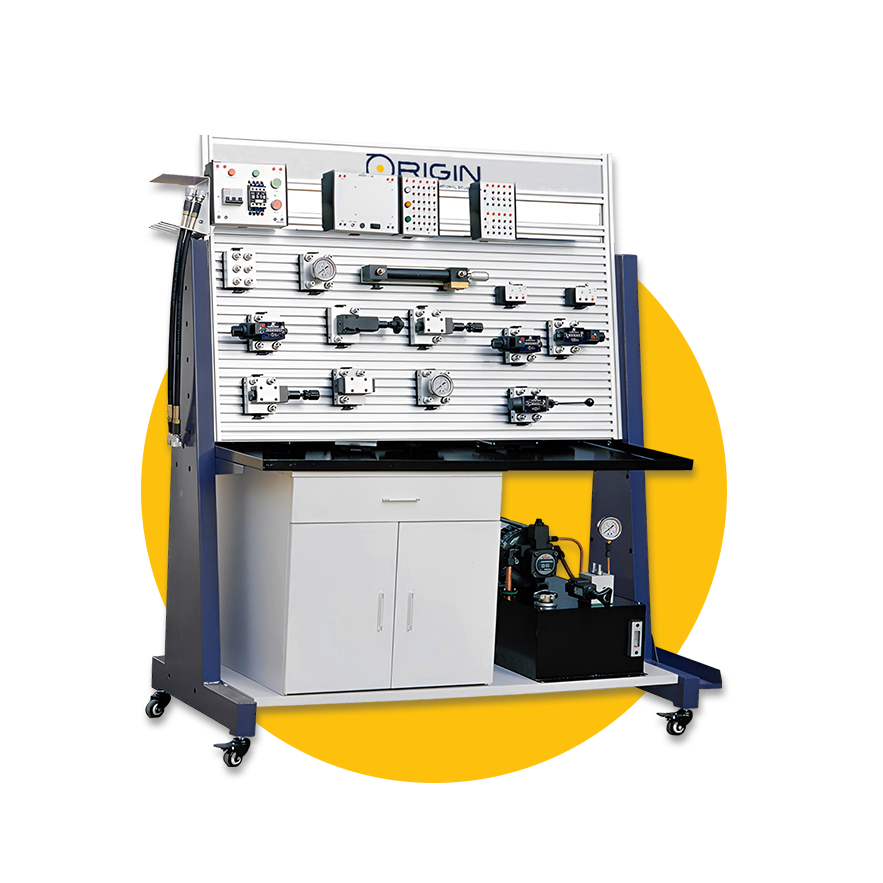
Advanced Hydraulic training unit
Code : (MTH-15)
Hydraulics training system is created for practical training across a wide range of topics. Variety of hydraulic circuits employed in typical industrial uses.
The instruction the system is outfitted with numerous hydraulic parts to improve functionality students' abilities in building circuits and interpreting diagrams.
Students will gain knowledge through the training program.
How to incorporate various components into the circuit and connect the electrical components through wiring activate the circuit.
• Operation of a cylinder that acts in only one direction with all the components of the circuit.
• Functioning of a one-way cylinder with a control valve.
• Utilization of a dual-acting cylinder with throttle and check valve (meter in/meter out).
• Utilization of a dual-acting cylinder equipped with throttle and check valve.
• Using a throttle to control a double acting cylinder.
• Functioning of a double acting cylinder utilizing a unidirectional flow control valve
• Functioning of a dual-acting cylinder using a unidirectional flow control valve
• Functioning of a dual-acting cylinder with throttle and ABT valve connection.
• Exploration of categories and characteristics of hydraulic fluids
• Valves for controlling flow, directing flow, and preventing backflow
• Determining and measuring durations, as well as forces, involved in the expansion and contraction of a cylinder.
• Calculations involving force and velocity
• The structure and functioning of a differential circuit.
• Comparison of pressure relief valves and pressure regulators
• Utilizing 4/3-way valves with varying center positions
• Utilize the flow control valve to regulate the velocity.

Electro-Hydraulic training unit
Code : (MTH-16)
Electro hydraulics training system is created for practical training across a wide range of topics.
Variety of electro hydraulic circuits employed in typical industrial uses.
Students will gain knowledge through the training program and how to incorporate various components into the circuit and connect the electrical components through wiring activate the circuit.
• Functioning of hydraulic solenoid valves
• How a relay operates
• Electrically, the signals are locked in a relay control system.
• Manual and automated functioning
• Operating a single acting cylinder using a 3/2 valve with an electric control signal via a push button or a selector switch.
• Operating a double acting cylinder using a 4/2 valve with an electric control signal via a push button or selector switch.
• Operating a double-acting cylinder with a 4/2 valve using two electric control signals from two push buttons.
• Operating a double acting cylinder with a 4/3 valve using two electric control signals from two push buttons.
• Operating a double acting cylinder, and implementing a cyclical motion with the help of two limit switches.
• Utilizing and creating fundamental logic functions
• Troubleshooting in electro-hydraulic control system
